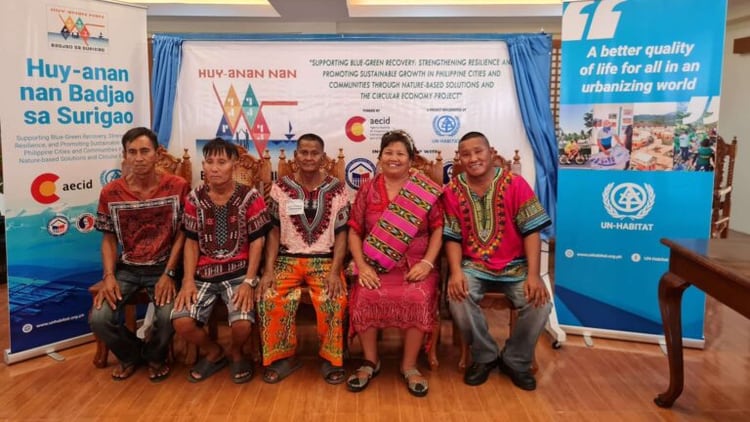The Diplomat
The Government of Spain through the Spanish Agency for International Development Cooperation (AECID) will fund the UN-Habitat project to rehabilitate the Badjao community in the Philippines, which was affected by a typhoon in 2021.
AECID, together with UN-Habitat Philippines, the Department of Human Settlements and Urban Development (DHSUD), the Provincial Government of Surigao del Norte, the Municipal Government of Surigao, and the Badjao community in Surigao City launched their partnership for the rehabilitation of the Badjao community affected by Typhoon Rai in 2021.
The action will be carried out through the project Supporting Blue-Green Recovery, Strengthening Resilience and Promoting Sustainable Growth in Philippine Cities and Communities through Nature-Based Solutions and the Circular Economy, implemented by UN-Habitat Philippines, as reported by AECID on its website.
The agreement was signed last 11th in Surigao City by Christopher Rollo of UN-Habitat Philippines, Robert Lyndon Barbers, Governor of Surigao del Norte, represented by Vice Governor Eddie Gokiangkee, Jr, Pablo Yves Dumlao II, Mayor of Surigao City, Christie Reyes, Regional Director of DHRUD Caraga, and Ronald Bastiong, Vice Chairman of the Badjao Tribal Council.
Vice President Gorvernor Gokiangkee stressed that the project will be implemented in such a way that there will be no displacement of livelihoods or hostility towards the Badjao culture, expressing the government’s respect for the tribe’s way of life. “The Badjao communities will not only be beneficiaries, but they will be our partners in the protection of the environment and the progress of our province,” Gokiangkee said in confirming Surigao del Norte’s efforts to strengthen the tribal group’s resilience.
Meanwhile, Surigao City Mayor Dumlao said he is coordinating with other government offices to enhance support for the Badjaos. “To highlight our plans for this community, we would like to turn it into a cultural village. In coordination with the Department of Education and the Office of the Vice President, we will immediately build a school for the Badjaos,” Dumlao said.
The head of the Spanish Cooperation in the Philippines, Violeta Dominguez, also issued a video message affirming the Spanish Embassy’s support for Surigao’s initiative.
For Reyes, DHSUD Caraga Regional Director, the project will be a product of effective collaboration, citing previous partnerships with UN-Habitat such as the Marawi Shelter and Livelihoods Reconstruction Project. “What we see is that this project will become a showcase of an effective convergence project between the local and provincial government, regional agencies, NGOs, our development partners, and also the community,” Reyes mentioned.
The project aims to strengthen the government’s capacities to support vulnerable populations displaced by natural disasters. Alternatively called Huy-anan nan Badjao sa Surigao (Home for the Badjao in Surigao), the project seeks to improve the living conditions of Badjao families who remain internally displaced almost two years after the disaster. The Badjaos, indigenous nomadic people of Mindanao who live off the sea, were one of the most vulnerable groups affected by Typhoon Rai, which affected some 16 million people and damaged more than two million houses.
While traditional reconstruction and rehabilitation efforts prioritise rebuilding communities as quickly as possible, Huy-anan nan Badjao sa Surigao seizes opportunities to apply nature-based resilient design solutions, provide open public spaces, integrate circular economy approaches and incorporate culturally sensitive design into the reconstruction process.
The project also builds on UN-Habitat’s strong experience in post-disaster and post-conflict resettlement using the People’s Process, climate-resilient urban planning and design, and resource management.






